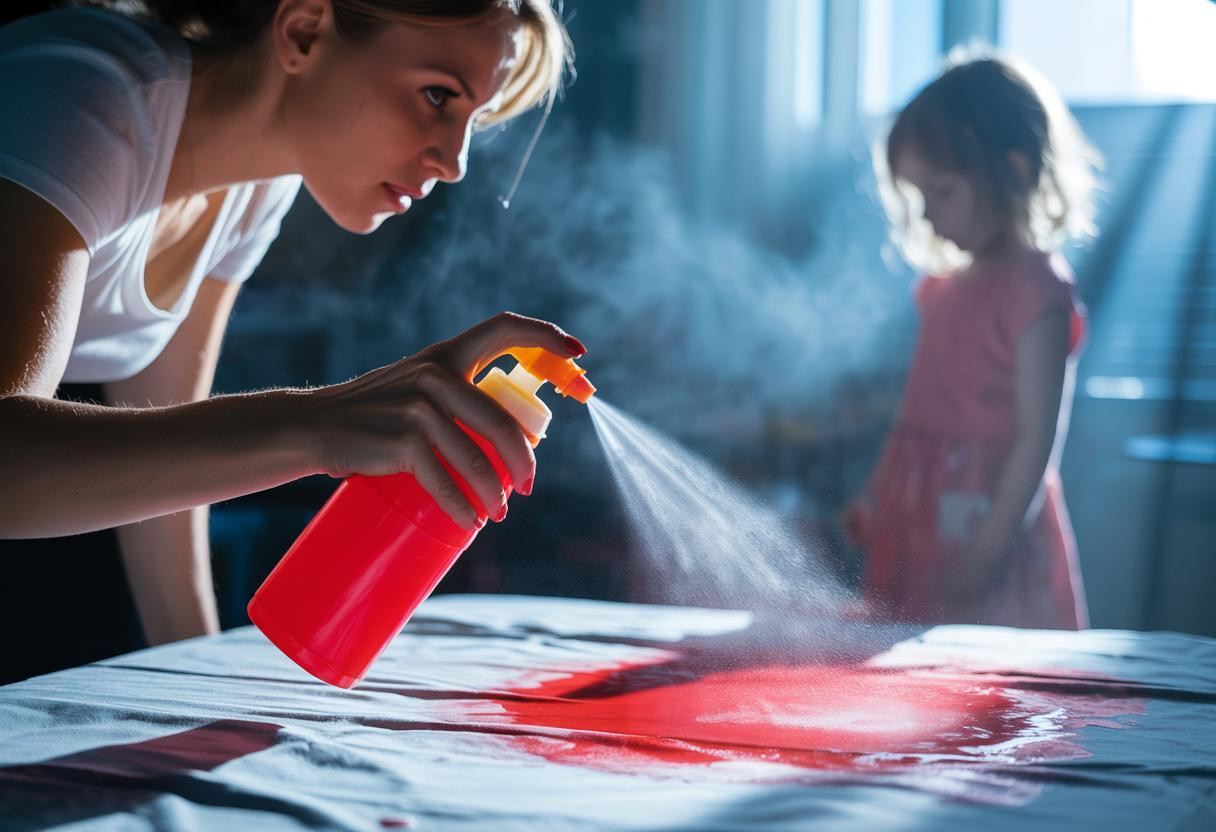Most people spray stain removers without thinking twice, but new research reveals a shocking connection: these common household products are triggering asthma attacks in millions of homes across America. A comprehensive analysis of 21 studies found that regular cleaning product users face a 50% increased risk of developing respiratory problems, with women and children showing the highest vulnerability rates.
The chemicals lurking in your laundry room aren’t just removing stains—they’re potentially damaging your lungs with every spray. Understanding this hidden health threat could protect your family from unnecessary respiratory distress.
The hidden chemical assault happening in your home
Your innocent-looking stain remover contains a cocktail of respiratory irritants that most consumers never see coming. Quaternary ammonium compounds, bleach, and volatile organic compounds (VOCs) work together to create a perfect storm for asthma triggers, according to recent toxicology research.
These chemicals don’t just sit on surfaces—they become airborne particles that penetrate deep into your respiratory system. When you spray that stubborn wine stain, you’re releasing micrometer-sized particles that can reach your lower airways within seconds.
The issue extends beyond traditional cleaning products. Just as toxic chemicals in everyday consumer products pose hidden health risks, stain removers contain undisclosed ingredients that manufacturers aren’t required to fully disclose.
Three mechanisms destroying your respiratory health
Epithelial damage from chemical irritants
Bleach and ammonia-based products literally burn through the protective lining of your airways, creating microscopic wounds that allow allergens and toxins to penetrate deeper. This damage triggers an inflammatory cascade that can persist for days after exposure.
Studies show that hydrochloric acid exposure can reduce lung function by up to 1,059 mL immediately after use. That’s equivalent to losing nearly 20% of your breathing capacity from a single cleaning session.
Immune system sensitization
Benzalkonium chloride, found in fabric softeners and disinfectants, trains your immune system to overreact to future exposures. This creates a vicious cycle where each cleaning session makes you more sensitive to the next.
Similar to how people experience understanding sudden allergic reactions to common household products, stain remover chemicals can trigger unexpected respiratory responses in previously healthy individuals.
Oxidative stress accumulation
Repeated exposure creates a buildup of free radicals in your lung tissue, leading to permanent scarring and reduced elasticity. This irreversible damage explains why some people never fully recover their breathing capacity even after eliminating triggers.
Who faces the greatest danger
Women show disproportionately higher rates of cleaning-related asthma, with female housekeepers exhibiting the most severe lung function decline. Daily cleaning product use triples your risk of uncontrolled asthma, while weekly use doubles it.
Children exposed to high cleaning product levels during infancy face a 40% increased risk of developing recurrent wheeze by age three. Pre-existing asthma sufferers experience the most dramatic responses, with uncontrolled cases showing amplified reactions to even minimal exposures.
Healthcare professionals are now recognizing this pattern. Just as dermatologists’ warnings about hidden health risks have changed treatment approaches, pulmonologists are incorporating cleaning habit assessments into routine asthma management.
Immediate protection strategies that work
Eliminate the spray mechanism
Microfiber cloths with plain water remove 99% of bacteria without any chemicals. This simple switch eliminates aerosolized particles while maintaining cleaning effectiveness.
Create ventilation barriers
Open windows before cleaning and use fans to push contaminated air outside rather than circulating it through your home. This single step reduces indoor chemical concentrations by up to 80% within 15 minutes.
Time your cleaning strategically
Clean when family members are away, allowing chemical residues to dissipate before re-exposure. Wait at least 30 minutes before returning to treated areas.
The surprising truth about “natural” alternatives
Enzyme-based cleaners break down organic stains without releasing VOCs, while white vinegar solutions neutralize odors without respiratory irritation. These alternatives cost 60% less than commercial products while eliminating health risks entirely.
Baking soda paste removes protein-based stains more effectively than harsh chemicals, and lemon juice tackles mineral deposits without creating toxic fumes. The cleaning industry’s best-kept secret? Most stains respond better to gentle, natural treatments than aggressive chemical assault.
Protecting your family’s respiratory future
The connection between stain removers and asthma represents a preventable health crisis hiding in plain sight. By choosing safer alternatives and improving ventilation, you can eliminate this hidden threat while maintaining a clean, healthy home environment.
Your lungs will thank you for making this simple but crucial change today.
